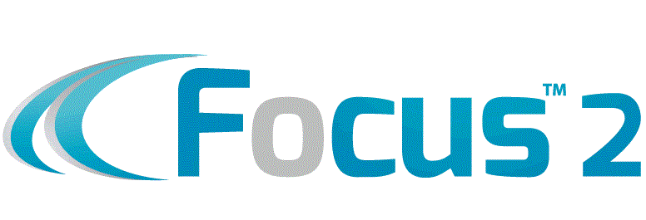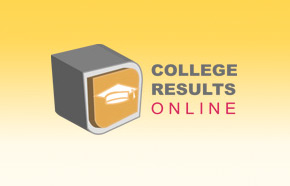Show me the ‘scholarship’ money (AZ Scholarships)
Arizona Commission for Postsecondary Education
Leveraging Educational Assistance Partnership (LEAP)
What is the Leveraging Educational Assistance Partnership (LEAP) Program?
It is a program that establishes a federal-state partnership to provide financial assistance in the form of grants to students who have demonstrated financial need. Federal funds are provided to match appropriated state funds supplied by the states on a dollar for dollar basis. Each participating institution, public, or private provides institutional matching funds which are equal to the amount of funds provided by the State for the LEAP Program.
Which institutions are eligible to participate?
Only public and private postsecondary institutions that are properly licensed in Arizona and accredited by a nationally recognized accrediting agency (which is recognized by the U.S. Department of Education) are eligible.
Who is eligible to receive LEAP awards?
Arizona residents who are attending a participating eligible Arizona postsecondary education institution as either a full-time or half-time undergraduate or graduate level student and who can demonstrate financial need are eligible for LEAP awards.
How do students apply for the LEAP program?
Students apply for LEAP awards at their institution’s financial aid office. All LEAP awards must be approved by the Arizona Commission for Postsecondary Education.
Arizona Commission for Postsecondary Education
Leveraging Educational Assistance Partnership (LEAP)
What is the Leveraging Educational Assistance Partnership (LEAP) Program?
It is a program that establishes a federal-state partnership to provide financial assistance in the form of grants to students who have demonstrated financial need. Federal funds are provided to match appropriated state funds supplied by the states on a dollar for dollar basis. Each participating institution, public, or private provides institutional matching funds which are equal to the amount of funds provided by the State for the LEAP Program.
Which institutions are eligible to participate?
Only public and private postsecondary institutions that are properly licensed in Arizona and accredited by a nationally recognized accrediting agency (which is recognized by the U.S. Department of Education) are eligible.
Who is eligible to receive LEAP awards?
Arizona residents who are attending a participating eligible Arizona postsecondary education institution as either a full-time or half-time undergraduate or graduate level student and who can demonstrate financial need are eligible for LEAP awards.
How do students apply for the LEAP program?
Students apply for LEAP awards at their institution’s financial aid office. All LEAP awards must be approved by the Arizona Commission for Postsecondary Education.
How large are Arizona LEAP awards and must they be repaid?
The maximum LEAP award is $2,500 and minimum is $100 per academic year. LEAP awards are grants and do not have to be repaid.
Leveraging Educational Assistance Partnership (LEAP)
What is the Leveraging Educational Assistance Partnership (LEAP) Program?
LEAP is a program that establishes a federal-state-higher education institutional partnership to provide financial assistance in the form of grants to students who have demonstrated financial need. Federal funds are provided to match appropriated state funds supplied by the states on a dollar for dollar basis. Each participating institution, public, or private provides institutional matching funds which are equal to the amount of funds provided by the State for the LEAP Program.
Institutional Participation in LEAP:
The deadline for submission of the program participation application is April 30th of each year. If your institution is already participating in the LEAP program, an application will automatically be mailed to your institution each year. If your institution would like to participate in the LEAP program, please contact the Arizona Commission for Postsecondary Education at 602-258-2435 ext. 102.
Which institutions are eligible to participate?
Only public and private postsecondary institutions licensed in Arizona and accredited by an accrediting agency which is recognized by the U.S. Department of Education are eligible.
Secure Submission of Student Applications:
All participating institutions have been issued a user name and password to submit student applications online. If you have forgotten your user name and password, please contact the Arizona Commission for Postsecondary Education office at 602-258-2435, Ext. 102, and the Program Manager can provide you with that information. If you are a new participating institution, also contact the Commission for to be assigned a user name and password.
Private Postsecondary Education Student Financial Assistance Program (PFAP)
What is the Private Postsecondary Education Student Financial Assistance Program (PFAP)?
PFAP is a program established by the Arizona State Legislature to provide financial assistance awards to qualified students who wish to complete a baccalaureate degree program and are attending a participating private postsecondary institution.
Institutional Participation in PFAP:
The deadline for submission of the program participation application is June 30 of each year. If your institution is already participating, an application will be mailed to your institution. If your institution would like to participate in the PFAP program, please contact the Arizona Commission for Postsecondary Education at 602-258-2435 ext. 102.
Which institutions are eligible to participate?
Only private postsecondary institutions that are licensed in Arizona and accredited by a national accrediting agency (which is recognized by the U.S. Department of Education) are eligible.
Postsecondary education grant program; fund; program termination; definition
A. The commission on postsecondary education shall develop, implement and administer a postsecondary education grant program. The commission shall develop application forms, procedures and deadlines and shall select eligible students each year for participation in the postsecondary education grant program. The commission may establish partnerships with qualifying schools for the administration of the postsecondary education grant program. Participating full-time students shall receive a grant in an amount of two thousand dollars annually for a maximum of four calendar years to be used to pay all or a portion of the following:
1. The tuition charged at a qualifying school.
2. The cost of books required for classes at a qualifying school.
3. The fees charged at a qualifying school.
B. The amount of a grant awarded to a participating part-time student enrolled at least half-time for the academic year as defined in 20 United States Code section 1088 shall be prorated in accordance with the part-time status of the student.
C. Employees of private postsecondary institutions and family members of employees of private postsecondary institutions are not eligible to receive a postsecondary education grant pursuant to this section if the employee or family member is eligible for tuition reimbursement or a tuition waiver as a benefit of employment.
D. A student who has a baccalaureate degree from any postsecondary educational institution is not eligible to receive postsecondary education grant monies pursuant to this section.
E. Students who provide satisfactory proof to the commission that the student has met each of the following criteria are eligible to submit an application for consideration by the commission for a grant under the postsecondary education grant program:
1. The student either:
(a) Is currently a resident of this state and has been a resident of this state for at least the past twelve months.
(b) Is a member of the military service of the United States stationed in this state or the spouse or dependent of a member of the military service of the United States stationed in this state.
2. The student has met the qualifications adopted by the commission. The commission shall adopt minimum qualifications that are comparable to the admissions standards established by the Arizona board of regents for Arizona public universities.
3. The student registers for enrollment as a student in a baccalaureate program at a nationally or regionally accredited private postsecondary educational institution in this state that awards four year baccalaureate degrees.
4. The student has provided high school transcripts as proof of graduation if the student has graduated from a public or private high school. If high school records no longer exist for a student or after every reasonable effort has been made to obtain official records, the student may submit a letter certified by the high school from which the student graduated or the original high school diploma.
5. The student has completed and submitted a free application for federal student aid.
6. The student is a citizen or legal resident of the United States or is otherwise lawfully present in the United States.
7. If the student is eligible to apply for monies from the private postsecondary education student financial assistance fund established by section 15-1854, the student shall apply for and receive monies from the private postsecondary education student financial assistance fund before the student is eligible to apply for a grant from the postsecondary education grant fund established by this section.
F. The postsecondary education grant fund is established consisting of legislative appropriations. The commission shall administer the fund. Monies in the fund are continuously appropriated and are exempt from the provisions of section 35-190 relating to lapsing of appropriations. The commission shall make awards for payment of tuition at qualifying schools to students who are selected to participate in the postsecondary education grant program pursuant to subsection A of this section.
G. If the amount of monies available for postsecondary education grants in any fiscal year is insufficient to provide grants to all eligible applicants, the commission shall award grants to eligible students in the order in which the applications were received by the commission, except that priority shall be given to qualifying students who received a grant in the previous fiscal year and who are still in good academic standing at the same qualifying school. The commission shall maintain a waiting list for all other applicants.
H. A student who fails to receive a baccalaureate degree within a five year period of receipt of the program award shall reimburse the postsecondary education grant fund for all awards received pursuant to subsection A of this section. On receipt of supporting documentation from the student, for good cause shown the commission may provide for extensions of the five year period to obtain a baccalaureate degree.
I. The commission shall submit an annual report to the governor, the president of the senate, the speaker of the house of representatives and the joint legislative budget committee that includes a detailed description of the amount of monies distributed under the postsecondary education grant program during the previous fiscal year and that includes the total number of qualified applicants for grants, the total number of grants awarded, the qualifying schools attended by grant recipients and the total number of qualified applicants who were placed on the waiting list. The commission shall provide a copy of this report to the secretary of state and the director of the Arizona state library, archives and public records.
J. If the commission is notified by a qualifying school that a student who has received a postsecondary education grant is no longer in good academic standing at the qualifying school, the commission shall immediately discontinue the grant and the student shall reimburse the postsecondary education grant fund for any unused portion or any unlawfully used portion of a grant received pursuant to subsection A of this section.
K. The commission shall develop a marketing strategy that is designed to provide information about the postsecondary education grant program to all high school students in this state.
L. The program established by this section ends on July 1, 2016 pursuant to section 41-3102.
M. For the purposes of this section, "qualifying school" means a nationally or regionally accredited private postsecondary educational institution in this state that offers four year baccalaureate degrees.
www.azhighered.gov
Arizona State Grant Programs
EGSG – Early Graduation Scholarship Grant program
PEG – Postsecondary Education Grant
PFAP – Arizona Private Postsecondary Education Student Financial Assistance Program
LEAP – Leveraging Educational Assistance Partnership
ACAAP - Arizona College Access Aid Program
SLEAP - Special Leveraging Educational Assistance Partnership
Application Information and Instructions
 Katie Gazda, Miss American Angus
Katie Gazda, Miss American Angus




